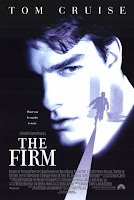There are many theories as to what a Thriller is - most of these can be applied to the genre as a whole, and some films within the Thriller genre conform to almost all of the theories:
- The Transformed City - This theory was developed by C K Chesterton, who suggested that Thrillers are 'the poetry of life'. It is the idea that an ordinary location can become extraordinary for the purpose of a Thriller. Most Thrillers are set in an urban environment, such as a big city, but for the Thriller to be successful, the environment must adapt to become different and more exciting.
- The Heroic Romance - This theory was introduced by Northrop Frye, who believed that the protagonist in a Thriller is forced to act and react in extraordinary ways to survive during the film. 'Heroes' in the Thriller genre begin as normal people, with normal lives and jobs, but must adapt for the film. Frye said that a Thriller 'moves the world in which ordinary laws of nature are slightly suspended' which allows the characters to perform extraordinary acts which would be almost impossible otherwise, such as jumping off a cliff and surviving.
- The Exotic - This theory was developed by John Cawelti, who introduced the idea that objects and buildings placed within a Thriller are not what we would expect to see in everyday life. Often props and artefact's would have originated from the Middle East or the Orient, which adds a sense of difference to the film. The audience enjoys the introduction of something unfamiliar into the film, as it holds their attention and reinforces the idea that the world within the Thriller is separate, different and more exciting than the real world.
- Mazes and Labyrinths - This theory, which was formed by W H Matthews, holds its origins in Ancient Greek Mythology, particularly the story of Theseus and the Minotaur. It is the concept of a predicament which the protagonist finds him or herself in, and the 'mazes' they must find their way through to reach the ending. These 'mazes' are often full of twist and dead ends which make it difficult for the characters to resolve conflict within the film. This concept can be both literal and metaphorical, but the audience is always presented with the problems that the hero must solve and how the character does this.
- Partial Vision - This theory, created by Pascal Bonitzer, explains how the audience only see so much of what is important in the film. This builds tension and suspense, leaving unanswered questions, seizing the attention of the audience and holding on to it. The theory indicates that what we as an audience do not see is just as important as what we do see - if we knew the identity of the murderer, the film would not be as effective as it is when we discover the identity for ourselves by following the plot and the characters. Partial Vision can be used in two ways, either that we are simply not told important information, or that we are not shown it, eg. we see murderer, but not his face.
- Concealment and Protraction - This theory, developed by Lars Ole Saurberg, suggests that the creation of suspense works in two ways. This pulls the audience in different directions and focuses their attention and interest. Saurberg says that the use of Concealment to create suspense is the deliberate hiding of information from the audience. This leaves unanswered questions. The use of Protraction to create suspense is the deliberate delay of an outcome. This could be delaying a bomb explosion - the audience knows what is coming, but by delaying it suspense is increased.
- The Question and Answer Model - This theory was introduced by Noel Carroll, and can be applied to almost, if not all, films in the Thriller genre. The theory outlines the idea that the audience is presented with questions, and then they wait in suspense to discover the answers. This involves the audience in the narrative, focusing their attention, and there are two factors involved: the Probability factor and the Moral factor. Carroll believes that the Probability factor is important because it opens up the possible outcomes, and for an audience this is much more exciting than a 'sure thing'. The Moral factor is also important because the outcome and what the audience views to be the morally right outcome may be different and this inspires suspense as the audience wait to find out which will happen.
- narratives which involve fear
- the creation of suspense
- the use of plot twists
- the use of different sub-plots
- music which creates tension
- the use of dark/shadowy lighting
- an urban setting
- sounds which represent the setting
- bad weather as this represents the narrative
- editing
- camera angle changes
- music which builds tension
- lighting
- the use of shadows
- fast paced editing
- mise-en-scene
- costume
- location
- surprises and twists
- mirrors/stairs which create tension
- flash backs
- specific character outlines include: the villian, the donor, the helper, the princess, the father, the dispatcher, the hero and the anti-hero
- crime thrillers
- political thrillers
- drama thrillers
- horror thrillers
- disaster thrillers
- psychological thrillers
- mystery thrillers
- action thrillers
- supernatural thrillers
- eco thrillers
- legal thriller
- medical thriller













No comments:
Post a Comment